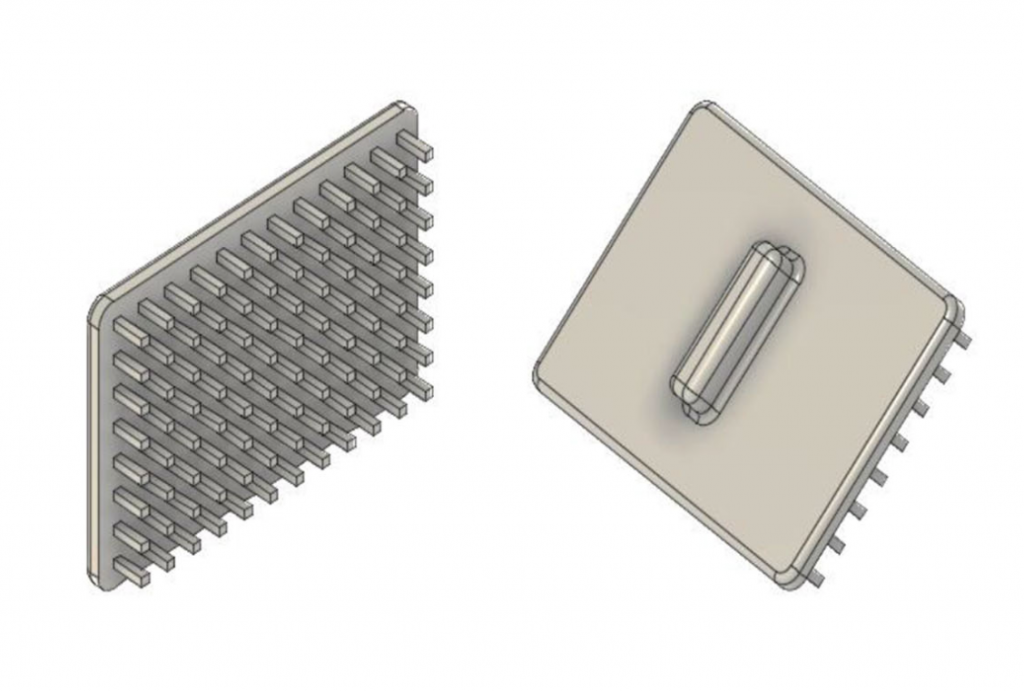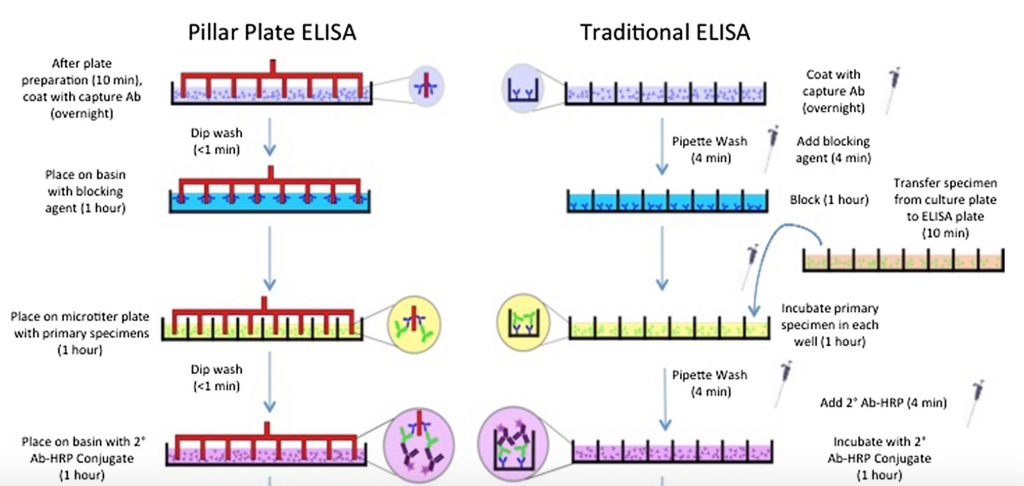If you’ve ever had a test at the doctors you’ll know that it can sometimes take weeks for the results to get back to you. This is dependent upon a whole range of factors, including the postal system, in a new article in the Annals of Biomedical Engineering, called “Stereolithography-Based 3D Printed “Pillar Plates” that Minimizes Fluid Transfers During Enzyme Linked Immunosorbent Assays”, reveals how researchers at the University of North Carolina at Chapel Hill are doing their part to speed up the process and introduce a technique have could advance healthcare.

The ELISA process
Enzyme-linked immunosorbent assay (ELISA) is a popular technique used for detecting substances, for example traces of nuts in food, or the presence of certain drugs in the blood stream. Shows such as CSI, NCIS and Person of Interest, are full of the examples of such tests, often dramatized as a technician in a white coat pipettes a liquid into a series of small wells.
In reality, a minimum of 12 rounds of pipetting is performed to achieve an adequate result, and when it’s all done by hand not only is it time consuming, but it’s also susceptible to human error and cross contamination. The alternative is to automate the process with robots – but this can be expensive and not always an option for all labs across the globe.
A 3D printed solution
For a robotics-free approach, J.D. McCallen, A. Schaefer, P. Lee et al. devised what they’ve termed ‘pillar plates’ that match the shape of conventional sample plates containing 96 and 384 individual wells. They used Autodesk Fusion 360 to convert the CAD part to .stl, and found Materialise’s service provided the most consistent 3D printed plates.

The schematic below shows how the pillar plates improve upon the traditional ELISA workflow. Note the small pipette icons on the right-hand side of the image, the additional transfer needed and the reduced wash time with a pillar plate.

North Carolina accelerate AM
The University of North Carolina has also been spearheading a Research Opportunities Initiative throughout 2016 which has granted millions of dollars to science projects in the state. The most recent research grant awarded $1.6 million to Advancing the Science and Practice of Metal-Based Additive Manufacturing led by Dr. Christopher Evans at the Center for Precision Metrology, supported by North Carolina State University.
With lab-based advances and large investments, it seems that UNC has all bases covered when it comes to furthering its exploration of additive manufacturing. The multi-campus university also counts itself among the 3 oldest universities in the United States, with more than 200 years of history as its foundation.
Featured image shows the robotic ELISA pipetting method that this research provides a more economic option to. Photo via: labcon.com


